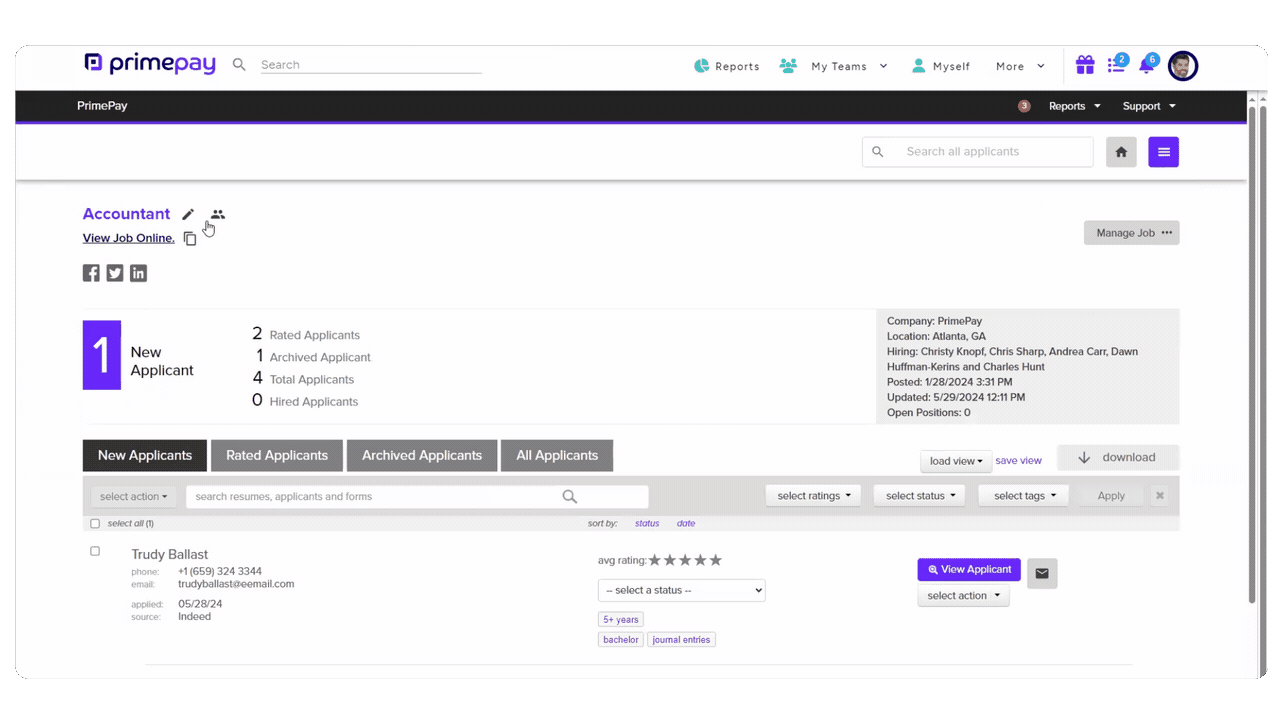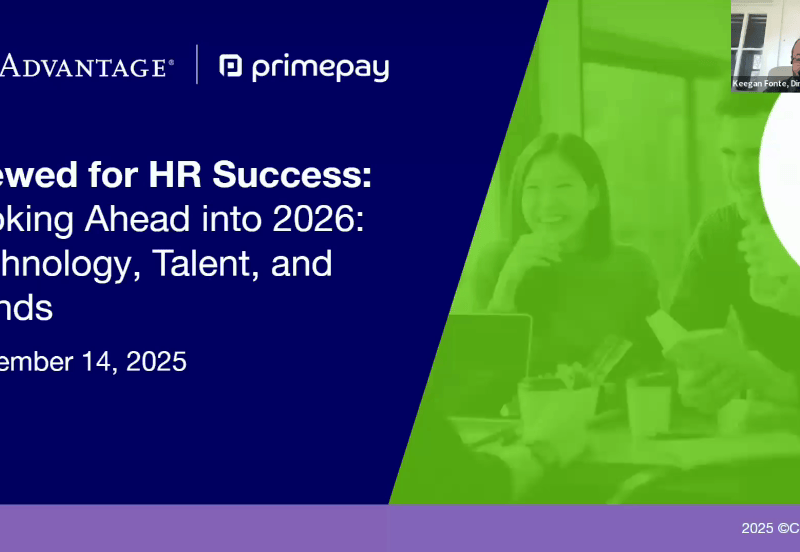McKinsey reports that 40% of people are considering leaving their jobs in the next three to six months. So why are recruiters in all industries consistently having trouble finding the right talent?
Research shows that:
- Qualified candidates are switching industries or leaving the workforce altogether.
- There has been a rise in niche roles requiring specific skills (that therefore take longer to fill).
- Candidates are pickier than ever and are choosing companies that offer competitive total compensation packages and promote workplace happiness.
Moreover, even if top talent is available for your open position, they are only on the job market for an average of ten days. It also doesn’t help that 10,000 Baby Boomers reach retirement age daily, opening up thousands of job opportunities.
Before you throw in the towel, we’re here to tell you what any therapist would (no fee required): focus on what you can control.
In this case, that means creating solid strategies.
Beyond evaluating your compensation and benefits package, it’s critical to understand and plan for the hiring season for your specific industry. By timing your efforts effectively – and preparing for the off-season and slower months – you’ll help increase the candidate pipeline for your current and future hiring needs.

Are you asking the right interview questions? Download our free list, Interview Questions for Recruiters, to ensure you’re hiring the best people for the role and team.
When is Hiring Season?
The beginning of the year – specifically January and February – and the fall months of September and October, stand out as the prime times for recruitment. Fresh budgets and new goals characterize these times, pushing companies to increase their hiring efforts.
January and February
We all know the refreshed feeling a new year brings, and businesses are no different. The bustling activity of completing new goals, sales forecasts, and budgets by year-end makes these months prime for recruitment.
September and October
The fall months of September and October also mark a peak hiring season. After the slower summer months, companies return with renewed energy and urgency to fill open positions before the year ends. This period is often seen as a final push to utilize annual budgets and avoid losing allocated funds for unfilled roles.
Preparing for the Recruitment Process
Candidates can spot unprepared recruiters from a mile away. Because the job market is so competitive, preparing everything involved in acquiring new talent is vital so your company can put its best foot forward.
Below are a few suggestions to help your recruiting team prepare and excel for the upcoming season.
Update Job Descriptions Postings
Updating job postings should be a no-brainer, right? Maybe not. “Despite the importance of job descriptions, very few HR professionals have a regular policy for updating them,” says Michael Kannisto, director of talent management and acquisition at JGL Industries Inc.
And when it comes to the actual online postings themselves, research shows that over 50% of jobs listed as filled or expired on Linkedin and Indeed are still open on the employer’s website. Yikes.
Consider scheduling regular reviews of your job postings to keep them accurate and aligned with industry trends and standards.
Incorporate details or achievements about your company to make the postings more compelling. Some tips to enhance their overall presentation include:
- Using professional and clear language
- Proofreading for errors
- Formatting consistency
- Using bullet points for clarity
- Including a salary range (70% of job seekers want to hear this information upfront and some city/states require it by law)
Tip: A best practice is to update job descriptions once a year. Senior HR generalist Jill Bidwell’s team schedules updating job descriptions after yearly performance reviews, since at this time they “set goals and objectives for the next review period.”
Recruit From Within
Recruiting from within your company is essential because it promotes a culture of growth and development, which can significantly enhance employee morale and engagement. When employees see clear opportunities for advancement, they’re more likely to remain committed and motivated in their roles.
According to a LinkedIn report, internal hires are 32% more likely to stay with the company, reducing turnover and the associated costs of recruiting external candidates. This internal mobility strengthens employee loyalty and ensures the company retains valuable institutional knowledge.
Additionally, hiring from within allows companies to fill positions with individuals familiar with the organization’s culture, values, and processes. This familiarity reduces the learning curve and increases the speed employees can contribute in their new role. In fact, external hires often take longer to adjust and have higher rates of failure in their first two years than internal candidates.
By prioritizing internal recruitment, companies can foster a more cohesive and effective workforce, ensuring that individuals fill leadership and key roles with a proven track record.
Use Employee Referrals
Employee referrals are a powerful recruiting strategy because they leverage existing employees’ trust and relationships within their networks. According to the Society for Human Resource Management (SHRM), employee referrals typically lead to a faster hiring process, with referred candidates being hired 55% faster than those sourced through career sites. This efficiency reduces the time-to-hire and the cost of lengthy recruitment processes, making referrals a cost-effective strategy for growing companies.
Moreover, referred employees tend to have higher retention rates, contributing to a more stable workforce. Research from Jobvite indicates that 46% of referred hires stay for at least three years, compared to only 14% of hires from job boards. This increased retention is often because referred candidates better understand the company culture and job expectations, leading to a more aligned and satisfied workforce.
Tip: There’s a reason many organizations give referral bonuses: 88% of businesses report that their best hires are referrals. If you don’t already, consider making these bonuses a practice at your company.
Invest in an ATS
You probably know that an Applicant Tracking System (ATS) makes the entire recruitment process more efficient and effective. But did you know that 86% of recruiters say using one increases the speed of hiring candidates?
That’s because an ATS automates time-consuming tasks such as resume screening, interview scheduling, and candidate communication, allowing HR teams to focus on strategic decision-making.
Joshua Siler, CEO of HiringThing, explains: “The ebb and flow of seasonal hiring surges demand speed and precision. An ATS equipped with robust automation and AI features ensures you can efficiently manage high applicant volumes while maintaining a smooth, candidate-centric process—critical for securing top talent in competitive seasons.”
Additionally, an ATS offers valuable data and analytics that help HR teams make more informed decisions. By tracking and analyzing recruitment metrics, companies can identify areas for improvement and refine their hiring strategies to attract and retain the right talent.

PrimePay’s ATS’s robust features – like AI job description generators and resume screeners – help HR teams check more off their to-do lists with the click of a button.
Overcoming Challenges During Slow Hiring Months
While slow hiring months present challenges, be proactive. Use this time to network, enhance your recruitment strategy, and strengthen your employer brand to help build connections and prepare for hiring season.
Build Your Employer Brand
A well-defined employer brand communicates the company’s values, culture, and what it’s like to work there, making it easier to attract candidates who align with these attributes. Showcasing your brand is essential, as 75% of people consider an employer’s brand before applying for a job.
Off-hiring seasons present a prime opportunity to focus on building and refining your employer brand. During these quieter periods, companies can invest in creating content that highlights their workplace culture, employee testimonials, and success stories. Engaging on social media, updating career pages, and participating in industry events or webinars can help keep the company visible and at the top of potential candidates’ minds.
Remember that enhancing your brand isn’t just a marketing strategy; it’s also about improving your employee experience. Jillian Einick, VP of Employer Brand at Recruitics, reminds HR leaders: “Your employer brand is never what you say it is. It’s what your employees and candidates say it is.”
Continue Networking
In the recruitment process, networking proves to be a potent tool. Here are some steps you can take to stay ahead in the recruitment process and be ready for hiring season:
- Join professional associations and online forums to connect with potential candidates and peers in your field.
- Research industry trends to stay informed and prepared for interviews.
- Stay updated on industry developments and emerging talent.
- Polish your employer brand and job postings to make a strong impression.
- Follow up with candidates after interviews to express your continued interest.
Use Online Platforms
Most HR teams use online platforms like LinkedIn, Indeed, and CareerBuilder to source candidates with diverse experiences and backgrounds.
Using online platforms during slow recruiting times is an effective strategy because it keeps your talent pipeline active and engaged, even when hiring needs are reduced. By maintaining a presence on these platforms, you can continue to build relationships with potential candidates and stay connected with top talent. That connection is key since 90% of job seekers accept a job offer faster when contacted by a recruiter.
This ongoing engagement ensures that when hiring picks up again, a pool of qualified, interested candidates is already familiar with the company and its opportunities. Additionally, slow periods allow recruiters to focus on passive candidates—those not actively looking for a job but open to new opportunities—ensuring that when demand rises, the organization can quickly respond with a robust and pre-vetted candidate pool.
Tip: Encourage employees to engage with your social recruiting content. The engagement will increase your impressions and alert employees of open positions they may be interested in or refer someone for.
Strengthen Your Recruitment Strategy
Understanding the ebbs and flows of hiring seasons is crucial for developing a successful recruitment strategy. However, the key to consistently attracting top talent lies in year-round efforts, such as leveraging online platforms, maintaining an active employer brand, and building relationships with potential candidates even during slower periods.
By staying proactive and focused on long-term goals, your organization can always be ready to seize opportunities and bring in the best talent, no matter the season.










